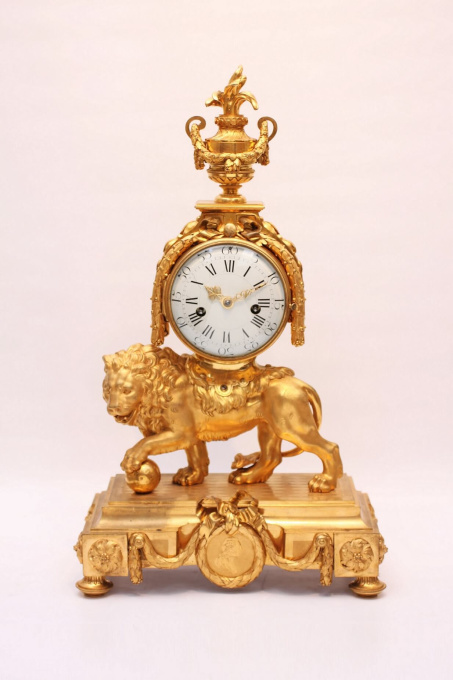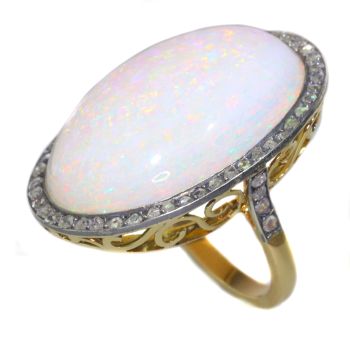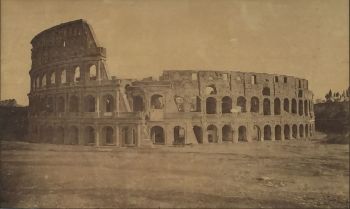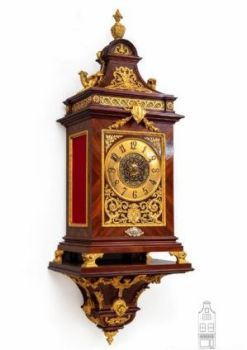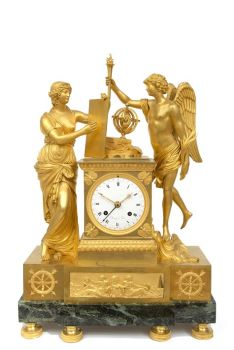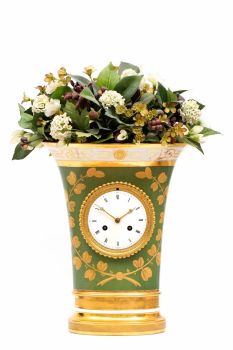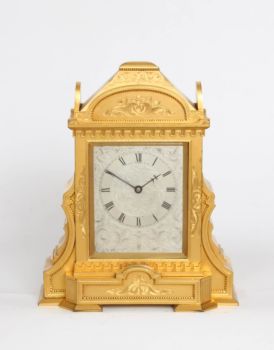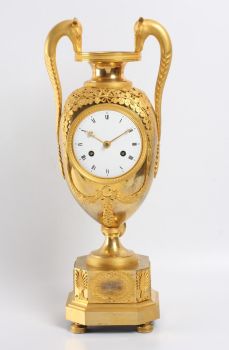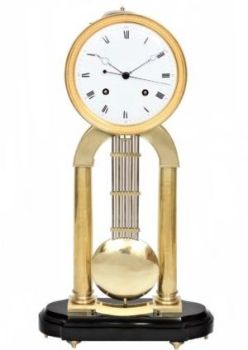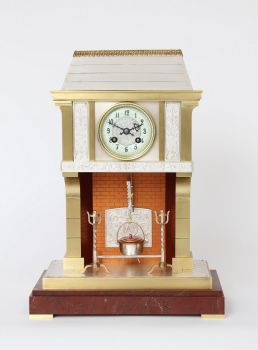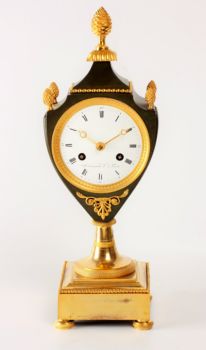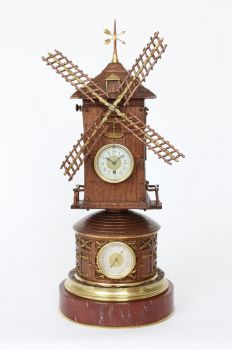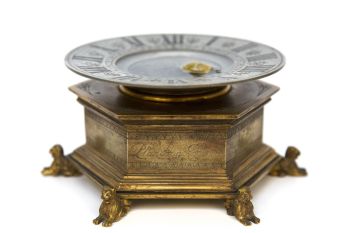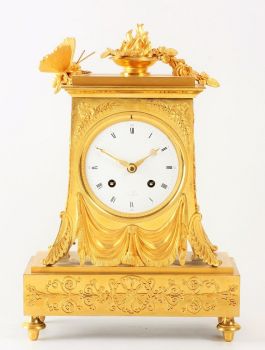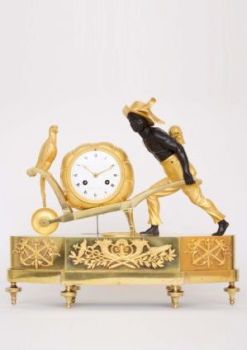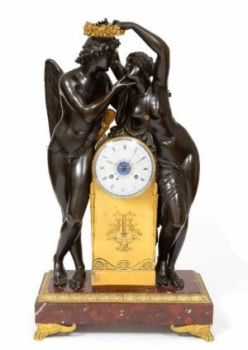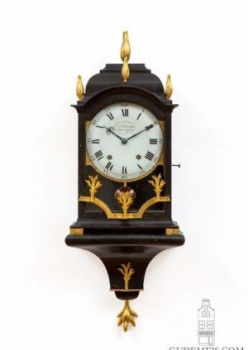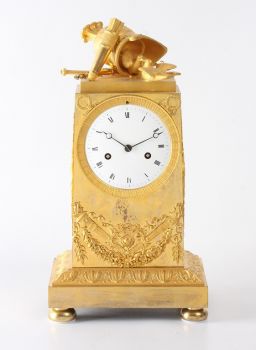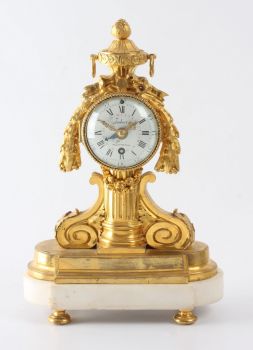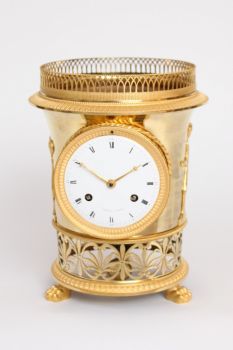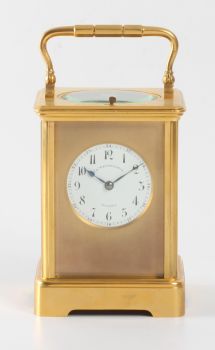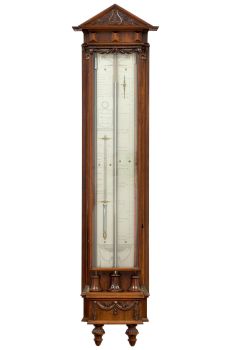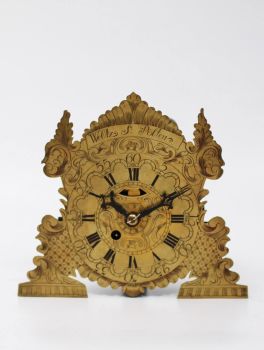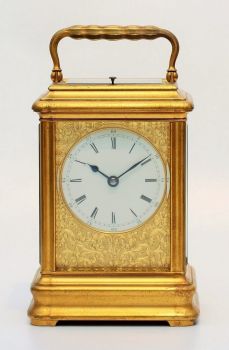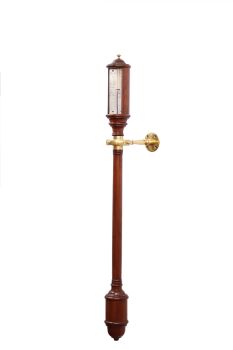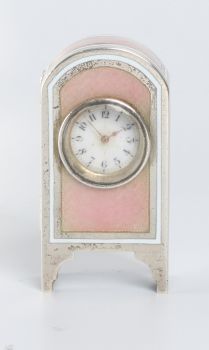A large French Louis XVI ormolu 'lion' mantel clock, circa 1760 1760
Artista Desconocido
62 ⨯ 36 ⨯ 18.50 cm
Precio a consultar
Gude & Meis Antique clocks and Music Boxes
- Sobre la obra de arte8-day movement with half hour striking, fine ormolu case.
enamel dial with Roman numerals and finely foliate pierced and engraved hands, 8-day spring driven movement with anchor escapement and silk suspended pendulum, countwheel half hour striking on a bell, fitted in an ormolu case hung with garlands and surmounted by an ormanetal urn, supported by a lion it's paw resting on an globe, base with diamond shaped pattern and rosettes to the corners, the front with a portrait of Louis XVI hung with garlands, the whole on turned feet.
Most of us would see a beautifully designed clock with the lovely colour combination of the gold, patinated bronze and the griotte rouge marble. And to my opinion it is. But there is more to it. Looking more closely we see that the figures are satyrs the helpers of Bacchus the God of wine. They are carrying a wine vessel surmounted by a wine cup covered by vine leaves, the whole on top of a panthers skin. All these features are also connected with Bacchus and strengthen the idea that the design personifies the wine harvest. Since the French elite of the second half of the 18th Century liked to mirror themselves to Antiquity, the theme would have fitted their taste very much. Just as it does fit ours nowadays. - Sobre el artista
Puede suceder que un artista o creador sea desconocido.
Algunas obras no deben determinarse por quién está hecho o por (un grupo de) artesanos. Algunos ejemplos son estatuas de la Antigüedad, muebles, espejos o firmas que no son claras o legibles, pero también algunas obras no están firmadas en absoluto.
También puedes encontrar la siguiente descripción:
•"Atribuido a …." En su opinión, probablemente una obra del artista, al menos en parte.
•“Estudio de….” o “Taller de” En su opinión, una obra ejecutada en el estudio o taller del artista, posiblemente bajo su supervisión
•“Círculo de…” En su opinión, una obra del período del artista que muestra su influencia, estrechamente asociado con el artista pero no necesariamente su alumno.
•"Estilo de …." o “Seguidor de…”. En su opinión, una obra ejecutada al estilo del artista pero no necesariamente por un alumno; puede ser contemporáneo o casi contemporáneo
•"Manera de …." En su opinión una obra al estilo del artista pero de fecha posterior
•"Después …." En su opinión, una copia (de cualquier fecha) de una obra del artista
•“Firmado…”, “Fechado…” o “Inscrito” En su opinión, la obra ha sido firmada/fechada/inscrita por el artista. La adición de un signo de interrogación indica un elemento de duda.
•“Con firma…”, “Con fecha…”, “Con inscripción…” o “Lleva firma/fecha/inscripción” en su opinión la firma/fecha/inscripción ha sido añadida por alguien que no es el artista
¿Está interesado en comprar esta obra de arte?
Artwork details
Related artworks
Artista Desconocido
Two Centaurs, France or Italylate 18th
Precio a consultarRobert Schreuder Antiquair
1 - 4 / 12Artista Desconocido
Set Franse Empire Pendules / Empire Lectura penduleearly 19th
Precio a consultarKuipers Kunst & Antiek
1 - 4 / 24- 1 - 4 / 12

